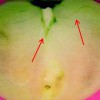The importance of protecting perishable foods from loss of quality during transport has long been recognized. Increased recognition of the importance of the transport link in the food distribution cold chain in securing the safety of perishable foods has more recently become as well recognized.
This updated edition reflects the dynamic changes and innovations in the handling and transportation of perishable foods. Some of these include improved insulation and air movement, microprocessors for more efficient refrigeration, expert systems to control the transport environment and conserve fuel energy, and the use of telematics to monitor and control the performance of refrigerated vehicles during transit. This edition includes descriptions and recommendations for food transported over the road and by rail in marine containers, as well as in railcars. This 214-page revision was written by J. K. Brecht, Steven A. Sargent, Patrick E. Brecht, Jorge Saenz, and Leonard Rodowick and published by the UF/IFAS Horticultural Sciences Department in cooperation with the USDA AMS Transportation Services Division.
http://edis.ifas.ufl.edu/hs1328
Tag: Steven A. Sargent
Seed Piece Spacing Adjustment for Florida Chipping Potato
Seed spacing directly affects crop revenue because the number of potato seeds planted determines the final plant population density. The analysis presented in this 5-page publication was extracted from a series of field trials that looked at improved potato plant arrangement in the field by adjusting seed piece spacing for Florida growing conditions. Written by Fernanda Souza Krupek, Steven A. Sargent, Peter J. Dittmar, and Lincoln Zotarelli and published by the UF/IFAS Horticultural Sciences Department, May 2018.
http://edis.ifas.ufl.edu/hs1317
Potato Vine Killing or Desiccation

Proper tuber maturity at harvest is an important factor in producing high-quality fresh-market potatoes. Tuber maturity is generally recognized as an important determinant of storage ability and cooking quality. Maturation can be artificially induced by killing the potato vines prior to harvest. This will benefit tuber appearance, limit tuber size, and improve tuber release from the vine. This four-page fact sheet describes the importance of tuber maturation, potato vine killing timing and available methods, and how to determine when to vine kill and when to harvest after vine kill. Written by Lincoln Zotarelli, Steven Sargent, Peter Dittmar, and Mildred Makani, and published by the Horticultural Sciences Department.
http://edis.ifas.ufl.edu/hs181
Postharvest Storage, Packaging and Handling of Specialty Crops: A Guide for Florida Small Farm Producers

Every year farmers must harvest their crops. This process marks the end of the growing season and carries social significance in communities, but it also creates challenges for producers trying to deliver fresh, high-quality produce to market. Good postharvest practices establish appropriate cold chains that maintain the correct temperatures, humidity, and respiration rates while also ensuring the safety, sanitation,and quality of the fruits. These postharvest practices differ, depending on the size and economic situation of an operation. This eighteen-page fact sheet provides postharvest storage, packaging, and handling recommendations for small farm specialty crop producers. Written by Jonathan Adam Watson, Danielle Treadwell, Steven A. Sargent, Jeffrey K. Brecht, and William Pelletier, and published by the Horticultural Sciences Department.
http://edis.ifas.ufl.edu/hs1270
Control of Rapid Postharvest Decays of Tomato Fruit
 What is a rapid postharvest decay? Water-soaked lesions begin within 12 to 18 hours after harvest and continue to develop, producing large amounts of fluids. The decay spreads within cartons of tomatoes, producing wet patches in the bottom and sides of the container, a condition called “wet-boxes.” Affected fruit are out-of-grade either prior to shipment or upon arrival at the receiver.This 5-page fact sheet was written by J. A. Bartz, S. A. Sargent, and D. J. Huber, and published by the UF Department of Horticultural Sciences, December 2014. (Photo: S. R. Bartz)
What is a rapid postharvest decay? Water-soaked lesions begin within 12 to 18 hours after harvest and continue to develop, producing large amounts of fluids. The decay spreads within cartons of tomatoes, producing wet patches in the bottom and sides of the container, a condition called “wet-boxes.” Affected fruit are out-of-grade either prior to shipment or upon arrival at the receiver.This 5-page fact sheet was written by J. A. Bartz, S. A. Sargent, and D. J. Huber, and published by the UF Department of Horticultural Sciences, December 2014. (Photo: S. R. Bartz)
http://edis.ifas.ufl.edu/hs363
Postharvest Quality and Decay Incidence among Tomato Fruit as Affected by Weather and Cultural Practices. (PP294)
 Postharvest decay losses for field-grown, fresh-market tomatoes are usually associated with harvests that occur when fields are wet and warm. During periods of persistently wet fields, decay pathogens infect damaged fruit on the plant as well as injuries to petioles and stems. Review of all reports and photos implicated excessive water in fruit rather than air temperatures as the primary predisposition. Excessive water in fruit is possible at virtually any time of the season and can appear at times of cold as well as warm field temperatures. This 8-page fact sheet was written by Jerry A. Bartz, Steven A. Sargent, and John W. Scott, and published by the UF Department of Plant Pathology, July 2012.
Postharvest decay losses for field-grown, fresh-market tomatoes are usually associated with harvests that occur when fields are wet and warm. During periods of persistently wet fields, decay pathogens infect damaged fruit on the plant as well as injuries to petioles and stems. Review of all reports and photos implicated excessive water in fruit rather than air temperatures as the primary predisposition. Excessive water in fruit is possible at virtually any time of the season and can appear at times of cold as well as warm field temperatures. This 8-page fact sheet was written by Jerry A. Bartz, Steven A. Sargent, and John W. Scott, and published by the UF Department of Plant Pathology, July 2012.
http://edis.ifas.ufl.edu/pp294
Manual de Prácticas para el Mejor Manejo Postcosecha del Mango (HS1190/HS1190)
This 78-page spanish-language manual includes quality-control procedures to use when monitoring the maturity and quality of mangos in commercial handling operations. It was written by Jeffrey K. Brecht, Steven A. Sargent, Adel A. Kader, Elizabeth J. Mitcham, Fernando Maul, Patrick E. Brecht, Octavio Menocal, and published by the UF Department of Horticultural Sciences, January 2011.
http://edis.ifas.ufl.edu/hs1190
HS1185 Mango Postharvest Best Management Practices Manual
HS1185, a 73-page illustrated monograph by Jeffrey K. Brecht, Steven A. Sargent, Adel A. Kader, Elizabeth J. Mitcham, Fernando Maul, Patrick E. Brecht, Octavio Menocal, is the best management practices manual for harvesting and handling mangos marketed in the U.S. The manual includes quality-control procedures to use when monitoring the maturity and quality of mangos in commercial handling operations. Includes references. Published by the UF Department of Horticultural Sciences, December 2010.
http://edis.ifas.ufl.edu/hs1185
HS1162/HS407 Protected Culture for Vegetable and Small Fruit Crops: High Tunnels for Strawberry Production in Florida
HS1162, a 4-page illustrated fact sheet by Bielinski M. Santos, Teresa P. Salamé-Donoso, Craig K. Chandler, and Steven A. Sargent, presents the results of research comparing the effects of high-tunnel and open-field production on the growth, fruit earliness, and yield of strawberry cultivars in Florida. Published by the UF Department of Horticultural Sciences, March 2010.
http://edis.ifas.ufl.edu/hs407
HS1148/HS396 Guide for Maintaining the Quality and Safety of Organic Vegetables and Melons During Harvest and Handling Operations
HS-1148, a 7-page fact sheet by Steven A. Sargent and Danielle Treadwell, highlights practical guidelines to assist growers and handlers of organic vegetables and melons to minimize losses during harvest and handling operations. Differences in recommendations between crops grown using organic methods and conventional production methods are noted. Includes references. Published by the UF Department of Horticultural Sciences, March 2009.
http://edis.ifas.ufl.edu/HS396

